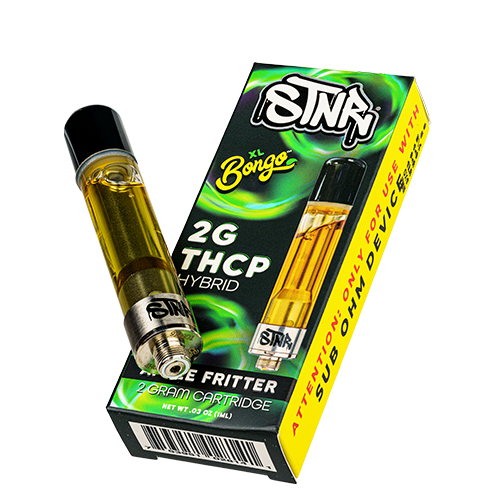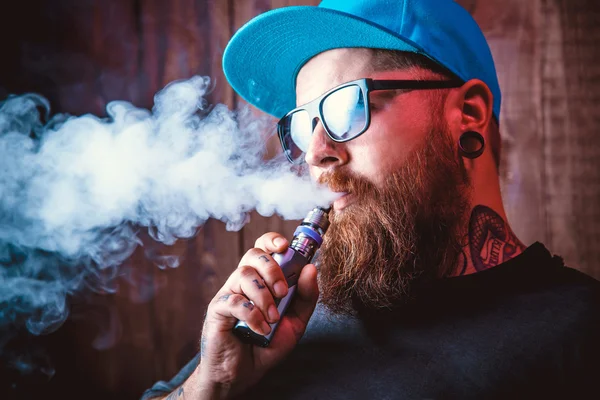Sub Ohm Vape: Complete Types and Differences

Table of Contents
Sub ohm vape setups have taken over sessions for a reason. They're known for thicker clouds, deeper flavor, and a whole vibe that's hard to beat.
But not every sub ohm vape hits the same, and understanding the different types can level up the entire experience. It's not just about grabbing any cart and battery combo.
It's about knowing the tools, how they work, and what separates one type from another. For anyone in the scene, this guide breaks down the types and differences without the fluff.
On the hunt for your next favorite cart? STNR Creations has you covered with their Sub Ohm Bongo series. Pop in the code sly420ng at checkout to save 20% instantly!
What Makes a Vape Sub Ohm

A sub ohm vape gets its name from the coil resistance. When the coil measures less than one ohm, it’s officially in the sub ohm category. That resistance level allows for higher wattage, which means hotter coils and bigger vapor production. This is where the clouds come from. The tech is simple, but the effect is massive.
Sub ohm vaping isn’t just about power. It’s about airflow and heat management too. More airflow cools the vapor down, letting users take in more at once without harsh throat hits. The result? Thick clouds, bold flavor, and smoother inhales. These features make sub ohm vape setups a favorite in lounges, house parties, and everywhere people want a hit that delivers.
Types of Sub Ohm Vapes
Box Mod Setups
Box mods are the powerhouse builds in the sub ohm world. They come with adjustable wattage, large batteries, and room for custom tanks. Box mods are ideal for users who want to tweak every detail of their session. From temperature control to wattage range, everything can be dialed in.
The customization on these is next level. Pick a coil resistance, choose the airflow, and pair it with a tank that supports sub ohm coils. These setups are perfect for cloud chasers and flavor fanatics who want full control. They're bulkier than pod systems, but the performance makes up for it every time you use a disposable vape or cartridge.
Sub Ohm Pod Mods
Pod mods bring sub ohm performance in a compact format. These devices are easier to carry around, usually come with refillable pods, and can handle sub ohm coils without needing a full box mod setup. They're ideal for people who want convenience but still want big clouds and bold hits.
Pod mods strike a balance. They’re not as tweakable as box mods, but they still offer airflow control and decent wattage settings. Most come with built-in safety features, which helps anyone who wants a fuss-free experience. They're popular among casual users who vape on the go but still expect quality hits.
Disposable Sub Ohm Vapes
Disposables aren't just for light users anymore. Some of the newer disposables pack sub ohm coils, giving cloud-level performance in a one-and-done format. These are easy to stash in a bag or pocket and are always ready to go.
They might not offer customization, but the ease of use is unbeatable. Just open the package and hit. The flavor is strong, the cloud production holds up, and there’s no need to mess with coils or tanks. They’re becoming more common at events, festivals, and chill hangs where convenience wins.
Differences That Matter
Coil Resistance and Wattage Range
Sub ohm vape coils range from around 0.15 to 0.9 ohms. Lower resistance means more heat and vapor, but also more battery drain. Each coil has a sweet spot for wattage, and running outside of that range can burn the coil or waste juice. Knowing these specs matters when dialing in a session.
Box mods give full control over wattage, while pod mods and disposables stick to preset limits. Users who want consistent flavor and massive clouds will usually lean toward lower resistance and higher wattage, but it’s a trade-off between performance and battery life.
Airflow and Draw Style
Sub ohm vape setups are designed for direct-to-lung draws. This means users inhale vapor straight to the lungs instead of holding it in the mouth first. Airflow on these devices is wide, allowing for deeper inhales and thicker clouds.
Box mods often come with fully adjustable airflow systems. Pod mods offer some control, while disposables are usually fixed. The draw style shifts based on the airflow setting, and that alone can make or break the session. People who like a smoother inhale with massive vapor will notice the difference right away.
Juice Compatibility
Sub ohm vapes pair best with low-nicotine, high-VG juices. The higher VG (vegetable glycerin) content creates smoother hits and bigger clouds. Using high-nicotine juices in sub ohm devices usually hits too harsh and can be overwhelming.
Knowing the juice ratio is key. VG-heavy juices keep the session flavorful without burning the throat. High-PG juices don’t hold up well in sub ohm setups. Whether it’s fruity, dessert, or earthy flavors, VG-based blends bring out the best in every puff.
Choosing the Right Type for the Vibe

Everyone’s session hits different. For max control and a tech-forward feel, box mods win every time. They’re for people who want to fine-tune, experiment, and lead the vape circle at every kickback. For portability and daily use, pod mods are the go-to. They’re low-maintenance but still hit with flavor and cloud.
Disposables fit the no-commitment vibe. Open it, use it, and keep moving. They’re casual, light, and ready at any moment. Knowing the differences between each type makes it easier to match the vape to the lifestyle. Sub ohm vape culture is all about finding that perfect fit.
FAQs
What is a sub ohm vape?
A sub ohm vape uses a coil with resistance below one ohm. This allows the device to produce more vapor, deliver stronger flavor, and support direct-to-lung draws. It's all about power and airflow.
Are sub ohm vapes better for clouds?
Yes. Sub ohm vapes create dense, thick clouds that fill the space fast. The combination of low resistance and high wattage produces visible vapor, which is perfect for people who enjoy visual feedback from each session.
What juice should be used with sub ohm vapes?
High-VG juices with low nicotine work best. VG (vegetable glycerin) is smoother and produces better clouds. Avoid high-nicotine blends since they can hit too harsh on sub ohm setups.
Do sub ohm vapes use more battery?
Yes. Since they run at higher wattages, they consume more power. That means more frequent charging or swapping batteries, especially during longer sessions.
Are sub ohm vapes beginner-friendly?
Some are. Pod mods and disposables are easier for beginners, while box mods require more knowledge about coils, wattage, and airflow. Choosing the right type depends on how much customization someone wants.
